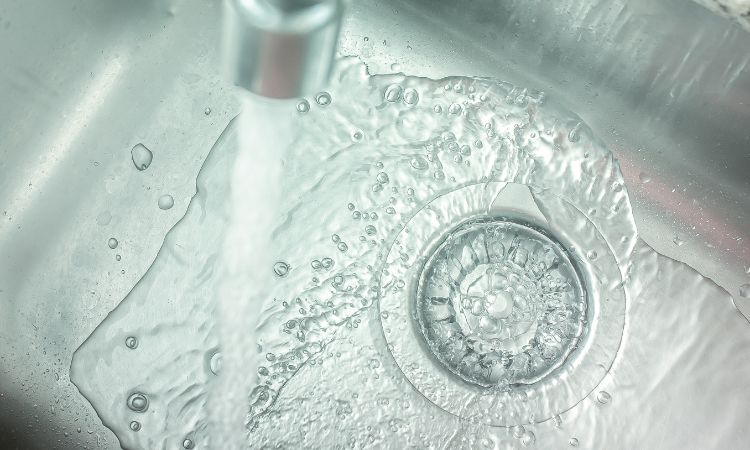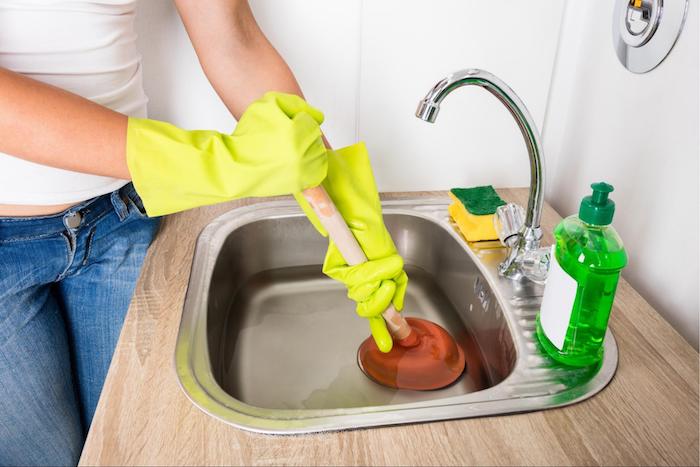The author is making a number of good points about 7 Ways To Fix A Slow-Draining Sink Before You Call A Plumber in general in this content which follows.

Intro
We've all been there: You're brushing your teeth or washing your hands, and you observe the water merging in the sink. As opposed to rapidly swirling down the drain, it lingers, transforming your once-refreshing morning regimen into a mini overload scene. A slow-draining sink isn't simply aggravating; it's typically an indicator of larger pipes concerns lurking beneath the surface area. The good news is that many slow-draining sinks can be repaired with a little expertise, a few standard tools, and some patience. Prepared to tackle this task head-on? Let's roll up our sleeves and dive right in.
Understanding the Reasons For a Slow-Draining Sink
Prior to you begin poking around in your pipelines, it helps to know what may be creating the slowdown. Recognizing the root cause makes it easier to pick the ideal repair.
Devices and Products You'll Need
The right devices make all the distinction. Luckily, you won't require a fully equipped plumbing technician's van to finish the job.
Step-by-Step Guide to Fixing a Slow-Draining Sink
Currently, let's enter the nitty-gritty. This detailed process will lead you through simple methods to restore your sink's drainage.
Step 1: Remove and Tidy the Stopper
Typically, the stopper (that tiny plug you push down to block water) is the very first perpetrator. Remove it very carefully and clean off any type of hair or gunk trapped around its base. Rinse it thoroughly prior to placing it back in position.
Action 2: Make Use Of a Plunger to Dislodge Particles
Got that plunger prepared? Setting it over the drainpipe and provide it a couple of company pumps. The idea is to produce suction that can loosen up any kind of blockage. If you see bits of debris floating up, you're on the right track.
Step 3: Try a Drain Snake or Wire Wall Mount
If the bettor doesn't do the trick, it's time to bring out the drainpipe snake. Delicately feed it into the drainpipe and twist as you go. You may feel some resistance-- that's most likely the blockage. Maintain turning and drawing up until you get rid of the blockage. If you don't have a drainpipe serpent, a straightened out cord wall mount can work in a pinch.
Tip 4: Apply a DIY Drain Cleanser
A natural cleaner made from cooking soft drink and vinegar can break down recurring gunk. Put half a cup of baking soda right into the drainpipe, complied with by half a mug of vinegar. Let it fizz for around 15 mins, then flush with warm water. This chain reaction commonly does marvels for small blockages.
Step 5: Reassemble and Test the Sink
Placed everything back together and run the faucet. Does the water now swirl down the drain at a decent rate? If yes, offer on your own a pat on the back. If not, do not anguish-- there are still a few even more dress up your sleeve.
Important Devices for DIY Fixes
A plunger is your go-to starting point. A tiny, sink-sized bettor develops suction that can dislodge small blockages. For even more persistent blockages, a drainpipe serpent (in some cases called a plumbing professional's auger) functions marvels. A set of gloves, a flashlight, and maybe a pair of protective goggles are additionally helpful.
Suggested Cleansing Solutions
Light meal soap and hot water can help break down greasy build-up. A combination of cooking soda and vinegar is a time-tested natural home remedy, and enzymatic cleaners use an even more green approach. Keep chemical drain cleaners as a last resort, as they can be severe on your pipes.
Usual Culprits Behind Slow Water Drainage
So, what's blocking things up? Generally, it's a blend of everyday particles-- believe hair, soap residue, toothpaste deposit, and remaining food particles. Over time, these tiny bits build up and cling to the pipe wall surfaces, progressively narrowing the flow and making it harder for water to pass through. In many cases, mineral deposits from hard water can additionally contribute to the crud, producing the best storm for persistent blockages.
When is it Time to Act?
If you discover the water draining slower than common, it's a great concept to step in sooner as opposed to later on. Waiting too long could bring about complete obstructions, unpleasant odors, or perhaps pipeline damage. If the water takes greater than a few secs to remove after turning off the faucet, consider it a red flag and get ready to put on your DIY hat.
Security First: Precautions and Preparations
Prior to you launch into unclogging setting, think about safety and security. You're managing possibly filthy water and particles, so slip on a pair of gloves. If you're utilizing chemical cleansers, guarantee the space is well-ventilated and follow the guidelines on the tag.
Safety Equipment and Work Space Configuration
Set some old towels or cloths around the sink area to catch sprinkles. Clear away any type of items that may get in your method, like soap dispensers or toothbrush holders. Make certain you have excellent lights-- get a flashlight if required.
Different Methods for Stubborn Clogs
Not all clogs are created equal. If your sink still declines to coordinate, think about these alternative options.
Sodium Bicarbonate and Vinegar Technique
We currently discussed this, but it deserves noting again. This mild, eco-friendly method is much safer than chemical cleaners and typically quite effective.
Chemical Drainpipe Cleaners
Enzyme-based cleaners use natural germs to digest raw material. They're an exceptional option if you're seeking to prevent harsh chemicals. Simply keep in mind, they may take a bit longer to function their magic.
Chemical Drain Cleaning Company: Benefits And Drawbacks
Chemical cleaners can blow up through tough blockages quickly, however they're not without drawbacks. They can produce warm and fumes, damages pipes if utilized exceedingly, and pose ecological threats. Utilize them sparingly, and constantly comply with the directions carefully.
Preventive Measures to Keep Your Sink Flowing
Prevention is the most effective treatment. By adopting a few easy habits, you can maintain your sink from decreasing to begin with.
Regular Cleaning Up Habits
Clean down the sink basin and component location regularly. Get rid of hair or food particles before they have an opportunity to wash down the drain.
Staying Clear Of Dangerous Compounds Away
Reconsider prior to disposing coffee premises, grease, or coarse veggie scraps down the sink. These wrongdoers hold on to pipe wall surfaces, creating clogs over time.
Regular Maintenance Checks
Schedule a fast month-to-month evaluation. Run hot water with the sink for a couple of mins, focusing on the flow. If it appears sluggish, act fast prior to it comes to be a full-blown blockage.
When to Call a Professional Plumber
In some cases, no matter how tough you attempt, that obstruct just will not budge. That's when it's time to generate the pros.
Indications That Show an Extra Major Problem
If your sink drains slowly regardless of several attempts, or if you see water supporting in various other components (like your shower or commode), you may have an extra severe pipes issue prowling deeper in the system.
Stabilizing DIY Efforts with Expert Aid
While DIY can conserve you cash and offer a feeling of accomplishment, there's no shame in calling a specialist. An expert plumbing technician can evaluate your entire pipes configuration, making sure there's no underlying damage or lasting trouble that could cost you a lot more in the future.
Contrasting Expenses and Long-Term Solutions
Prior to choosing, think about the big picture. An affordable, quick fix may solve the trouble temporarily, yet buying a much more irreversible option can conserve you money and tension in the long run.
Considering the Expenditures of DIY vs. Specialist Fixes
Do it yourself repairs frequently set you back little bit more than the price of a bettor or a bottle of baking soda. Professional services, on the other hand, come with a price tag yet may prevent repetitive problems and pricey fixings later.
Purchasing High Quality Fixtures and Upgrades
If your sink's style adds to regular obstructions, it could be worth upgrading to higher-quality components or altering the plumbing design. Consider this an investment in your home's performance and comfort.
Conclusion
A slow-draining sink can feel like a small irritability, yet it's commonly a sign that your pipes requires a little TLC. By understanding the source, using the right tools and methods, and committing to straightforward safety nets, you can keep your sink streaming freely. And when all else stops working, never ever be reluctant to call an expert-- your home's plumbing is worth the investment in treatment and maintenance.
Three Common Ways to Fix a Slow Drain
Baking Soda Method
Boil a full pot of water. Measure out cup of baking soda and pour it down the drain. Then take cup of the magical cleansing substance known as white vinegar and drop that down there too. Allow the mixture to fizz in the drain for five minutes as the vinegar and baking soda combine. Now dump in that whole pot of boiling water. This combination of cleaning substances should clear out anything that is causing your sink to drain slowly. If it doesn t...
Zip-It
If the baking soda method doesn t clear out your drain, it may be because a significant amount of hair and/or other debris has collected there and you need to remove it. Purchase a Zip-It tool at any home improvement or hardware store and insert it into your drain. It will catch any collected hair or debris that s blocking the flow of water. Pull it out. If it s got a big clump of hair, etc. on the end, you ve probably got your culprit.
Drain Cleaner
If these methods don t work, there is the standard drain cleaner that you can also buy in a hardware store or even your local grocery store. It s better if you can use a household solution, but these drain cleaners often work in a pinch. They re very simple to use. You generally just dump them in your drain and wait. If even this method is not effective, it may be time to call the plumber.
https://www.mrrooter.com/oneida/about-us/blog/2017/july/three-common-ways-to-fix-a-slow-drain/

I recently found that content on while doing a search on the web. Sharing is nice. Helping people is fun. We value your readership.
Suggested Site